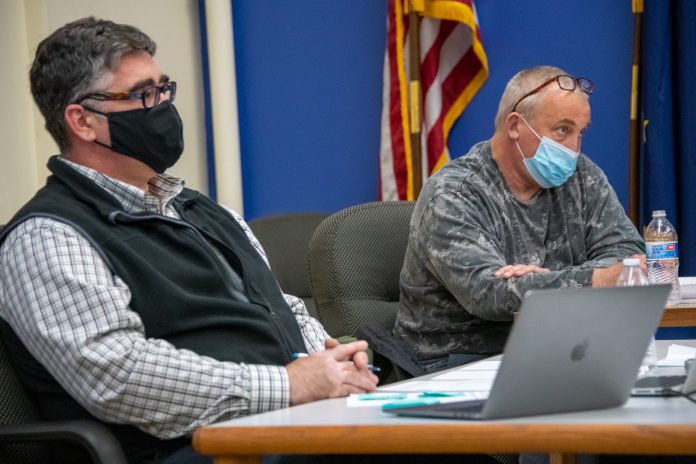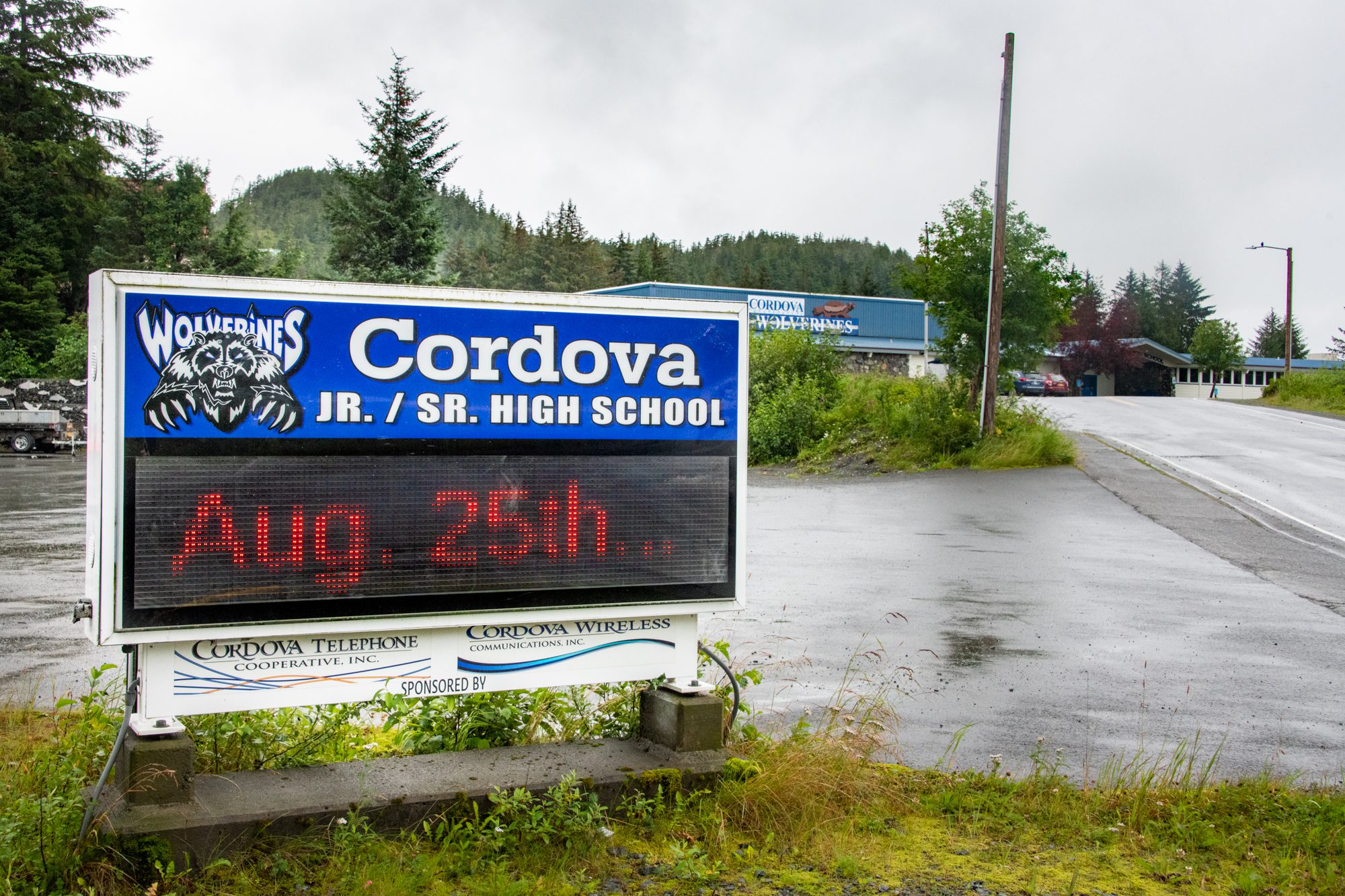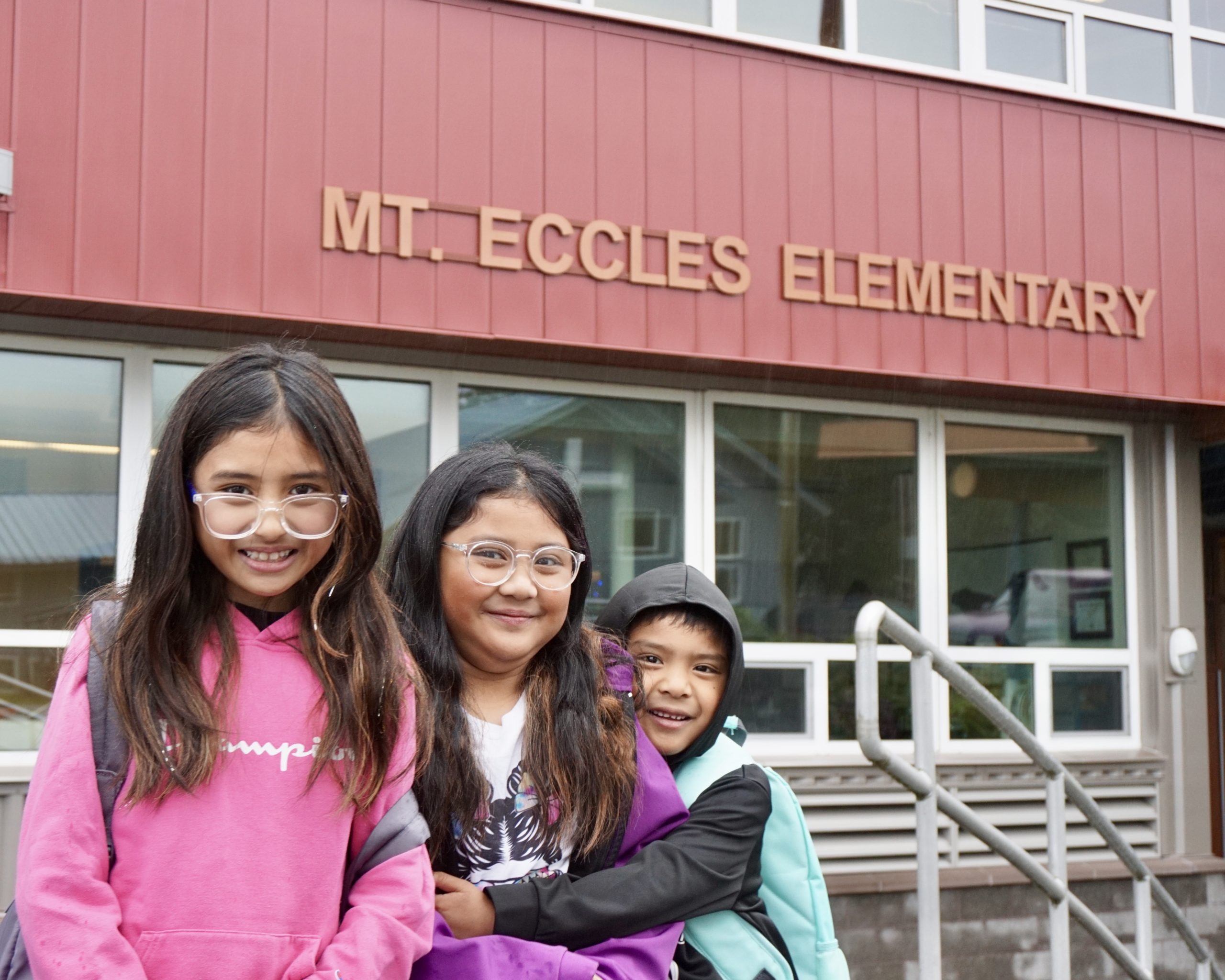
Russin: $1,430 increase is BSA is needed just to keep up with inflation
Cordova School District officials are in the very early stages of budget development for the coming year, and like school districts all over the state, are hoping the Base Student Allocation (BSA) will see a boost from $5,930 — the rate set last in 2017.
“If we just looked at keeping up with inflation since 2017, we would need an increase of $1,430 per student,” said Cordova School District Superintendent Alex Russin.
That would bring the BSA to $7,373.
With an increase in student enrollment this past year, the school district had attempted to add another elementary school teacher, but it didn’t quite work out, Russin told The Cordova Times in an interview on Feb. 8.
Plans are to begin holding budget meetings at the end of February.
Russin said he is encouraging the community to pay attention to the budget process. One of his concerns, as Gov. Mike Dunleavy’s administration and the State Legislature work to resolve the education budget, is that legislation introduced by the governor’s office would circumvent local schools to introduce charter schools — and the local school districts would have to pay for those charter schools.
In Cordova about 98% of students attend public schools. The number of students enrolled for correspondence courses is very small, Russin said.
“I just got back from Juneau yesterday,” he said. “The Senate and House education committees want a significant increase in the BSA, but where is the money going to come from?”
Mt. Eccles Elementary School currently has two classes each for kindergarten through fourth grade. The school district tried hiring a second teacher for the fifth graders, who number 28 students, but it just didn’t work out, he said. There are also 21 sixth graders currently enrolled, so next year the school district is looking to hire additional fifth and sixth grade teachers.
The district budgets about $100,000 per teacher, to cover salaries and benefits. Sick leave and seven holidays are included in the 187-day contract, with other benefits being mostly medical, vision and dental, he said.
The school district, with a total of 356 students, also boasts a very low rate of chronic absenteeism and the school lunch program is one of the best in the state, Russin said.
“We have a fresh fruit and vegetable bar every day for lunch. Baked good are made from scratch and fish is routinely on the menus,” he said.
Currently all students are eligible for free breakfast and lunch at school, with most costs paid through federal programs, but the school district still bears some of the expense.
Russin, who has served as superintendent for nine years, said Cordova is still a very attractive school district for families — but noted there are fewer and fewer people getting into the teaching profession, so the market pool for teachers has decreased overall.
During the height of the COVID-19 pandemic a number of teachers quit teaching, and parent involvement and volunteerism also declined. While parent involvement and volunteerism have returned, the nationwide teacher shortage still exists.
The school district must submit its budget for the coming school year to the state Department of Education by July 15. If there is no increase allocated for the BSA, the school district is currently projecting a deficit of $235,000 again for the coming year, “but we know overall costs will go up,” Russin said.

The deficit for the current year was covered in part by funds received from the Department of Education for additional students enrolled this year, and partially by drawing on the general fund. Funds reserved for two teacher positions that were not filled.
Dunleavy, in a news conference on Feb. 8, argued against increasing the BSA until a three-year study he wants done is concluded on what that boost would accomplish.
Dunleavy said he has more education experience than any other governor in the history of the state.
“We know we have performance issues in neighborhood schools,” he said. “These schools have become politicized over the years.” He also said that Alaska schools “need more people; we need more kids; we need better performance.”
“If you just put money in the BSA, there’s be no change in performance because we’ve done that year after year,” Dunleavy said. “Does that mean that schools and school districts don’t need money? They do — we’re putting money in the BSA, but why don’t we target it to the problems we know we have?”
Dunleavy’s comments on education funding focused more on his opinion that more money was needed for charter schools and homeschool education, while criticizing the accomplishments of traditional neighborhood schools. “Our charter schools are public schools with public school students with public school teachers with certificates trying to achieve a public educational outcome,” he said.
The governor argued that charter schools, as well as home schools, are a more focused approach to reading, writing and math.
“Historically underserved people are blowing the lid off our charter school scores,” he said. “That’s a route to help serve underserved people.”
His comments drew a sharp critique from the Alaska president of the National Education Association (NEA), Tom Klaameyer, who said Dunleavy’s approach of taking money from public schools to fund more charter schools could be damaging to the current public school system.
While sharing the governor’s excitement about the success of charter school students, Klaameyer said strong local controls that school districts currently utilize to approve charter schools could easily be sidestepped, allowing the governor’s appointed State Board of Education to rubber stamp additional charters while passing the cost on to local school districts to fund.

“NEA-Alaska is a strong supporter of our current public charter school system,” said Klaameyer. “Why not simply bolster the existing process rather than create a new system that could usurp local school boards’ authority to evaluate each new charter school based on its merits?”
Klaameyer also took issue with Dunleavy’s approval to solving teacher recruitment and retention issues.
“When talking about the BSA, the governor suggests that we can’t simply throw more money at our problems and expect something to change,” he said. “However his cash bonus scheme alone is exactly that, a limited short-term proposal only for classroom teachers… A return to a modest pension system (like proposed in Senate Bill 88) is a genuine long-term solution because it creates a real incentive for our educators to stay in Alaska. Despite mentioning his own secure state retirement, the governor gave this bill only a passing mention and dismissed pensions as something young people simply aren’t interested in.”
“It is documented and widely agreed that Alaska now has the worst teacher retirement system in the country … and Alaska has lost its competitive edge in teacher compensation relative to other states,” Klaameyer added. “Our educators want to put this issue to bed and focus on their jobs of preparing the next generation of Alaskans for a bright future.”
Retired educators have joined in the conversation on the cost of education, including the governor’s push for more charter school funding.
Frank Jefferies, a retired professor emeritus of management who taught for 24 years at the University of Alaska Anchorage College of Business and Public Policy, noted in a recent commentary in the Anchorage Daily News that charter school student populations are not representative of the overall student population in Alaska, starting with diversity.
“Data from the state Department of Education website for the 2022-2023 school year shows marked differences in ethnicity,” said Jeffries.
Native students represented 20.8% of the student population statewide and only 11.7% of the charter school population overall, he said.
“Comparing charter school outcomes with the overall student outcomes for the state is comparing apples to oranges based on demographics alone, and it brings into question who charter schools really serve,” he said.
Jeffries also noted that the proposed funding increase for homeschooling and charter schools is currently $40 million.
“Enrollment in charter schools was 7,065 students last year, or 5.35% of the state student population,” he said. “On a per-student basis, that is a $5,661 increase per student in the charter school system, while the proposed increase to the BSA for all other students is $300 each.”
This story originally ran in the Feb. 16 issue of The Cordova Times.












